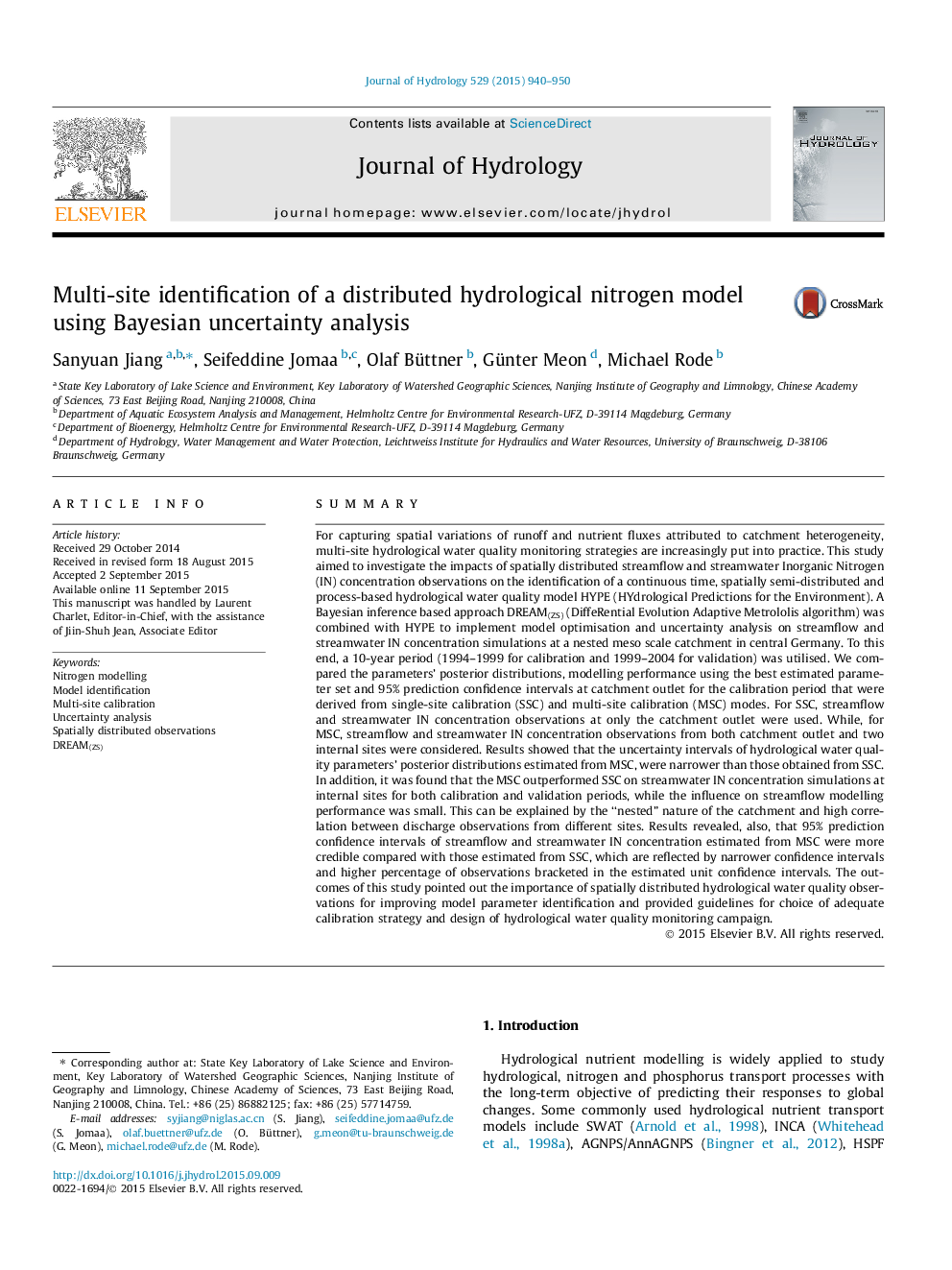| کد مقاله | کد نشریه | سال انتشار | مقاله انگلیسی | نسخه تمام متن |
|---|---|---|---|---|
| 6410713 | 1332885 | 2015 | 11 صفحه PDF | دانلود رایگان |

- Spatiotemporal dynamics of runoff and nitrogen were captured.
- Multi-site calibration decreases hydrological nitrogen parameter's uncertainty.
- Multi-site calibration improves nitrogen modelling performance at internal sites.
- Multi-site calibration decreases hydrological nitrogen prediction uncertainty.
- Information of multi-site observations depends on catchment characteristics.
SummaryFor capturing spatial variations of runoff and nutrient fluxes attributed to catchment heterogeneity, multi-site hydrological water quality monitoring strategies are increasingly put into practice. This study aimed to investigate the impacts of spatially distributed streamflow and streamwater Inorganic Nitrogen (IN) concentration observations on the identification of a continuous time, spatially semi-distributed and process-based hydrological water quality model HYPE (HYdrological Predictions for the Environment). A Bayesian inference based approach DREAM(ZS) (DiffeRential Evolution Adaptive Metrololis algorithm) was combined with HYPE to implement model optimisation and uncertainty analysis on streamflow and streamwater IN concentration simulations at a nested meso scale catchment in central Germany. To this end, a 10-year period (1994-1999 for calibration and 1999-2004 for validation) was utilised. We compared the parameters' posterior distributions, modelling performance using the best estimated parameter set and 95% prediction confidence intervals at catchment outlet for the calibration period that were derived from single-site calibration (SSC) and multi-site calibration (MSC) modes. For SSC, streamflow and streamwater IN concentration observations at only the catchment outlet were used. While, for MSC, streamflow and streamwater IN concentration observations from both catchment outlet and two internal sites were considered. Results showed that the uncertainty intervals of hydrological water quality parameters' posterior distributions estimated from MSC, were narrower than those obtained from SSC. In addition, it was found that the MSC outperformed SSC on streamwater IN concentration simulations at internal sites for both calibration and validation periods, while the influence on streamflow modelling performance was small. This can be explained by the “nested” nature of the catchment and high correlation between discharge observations from different sites. Results revealed, also, that 95% prediction confidence intervals of streamflow and streamwater IN concentration estimated from MSC were more credible compared with those estimated from SSC, which are reflected by narrower confidence intervals and higher percentage of observations bracketed in the estimated unit confidence intervals. The outcomes of this study pointed out the importance of spatially distributed hydrological water quality observations for improving model parameter identification and provided guidelines for choice of adequate calibration strategy and design of hydrological water quality monitoring campaign.
Journal: Journal of Hydrology - Volume 529, Part 3, October 2015, Pages 940-950